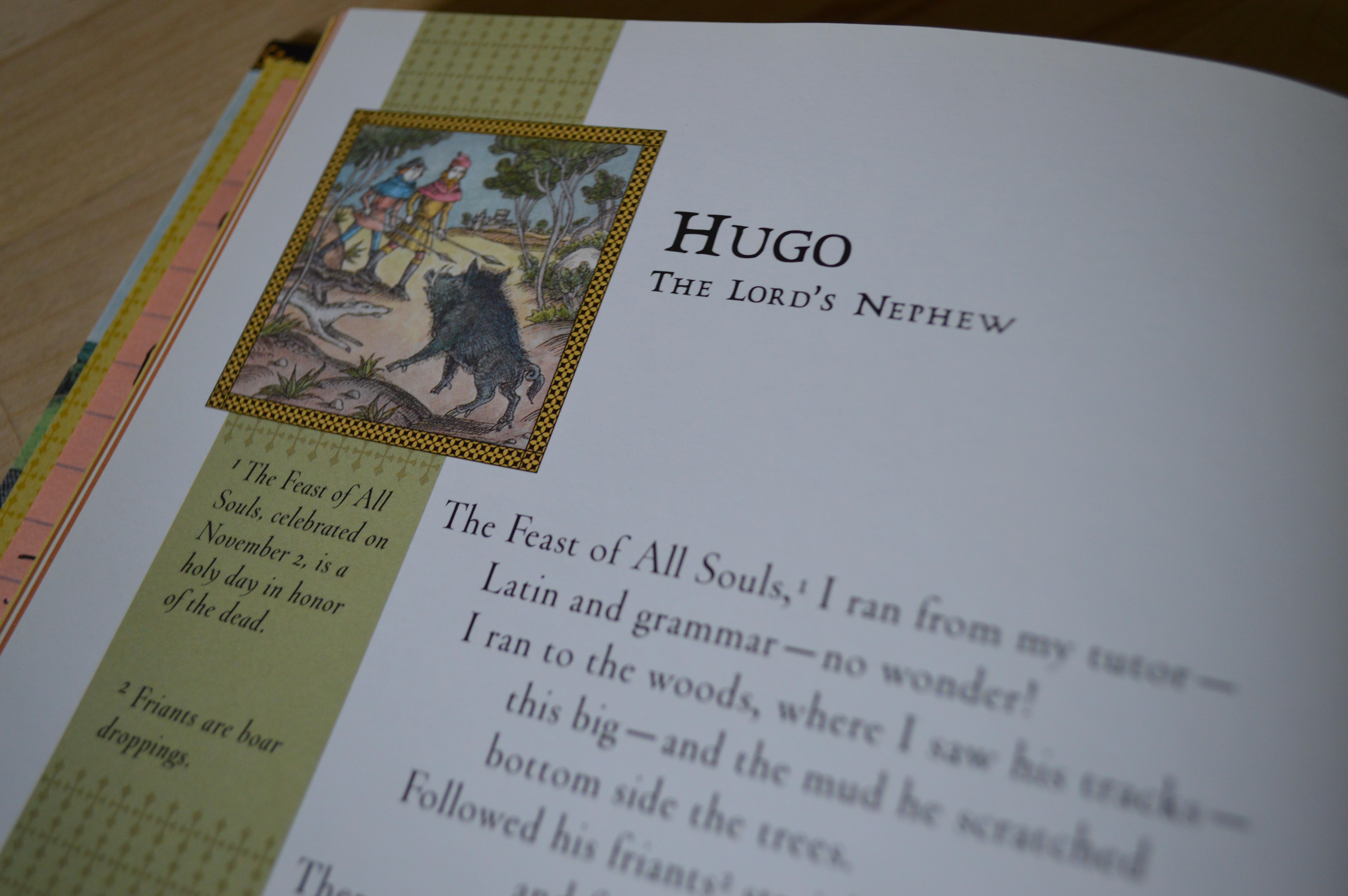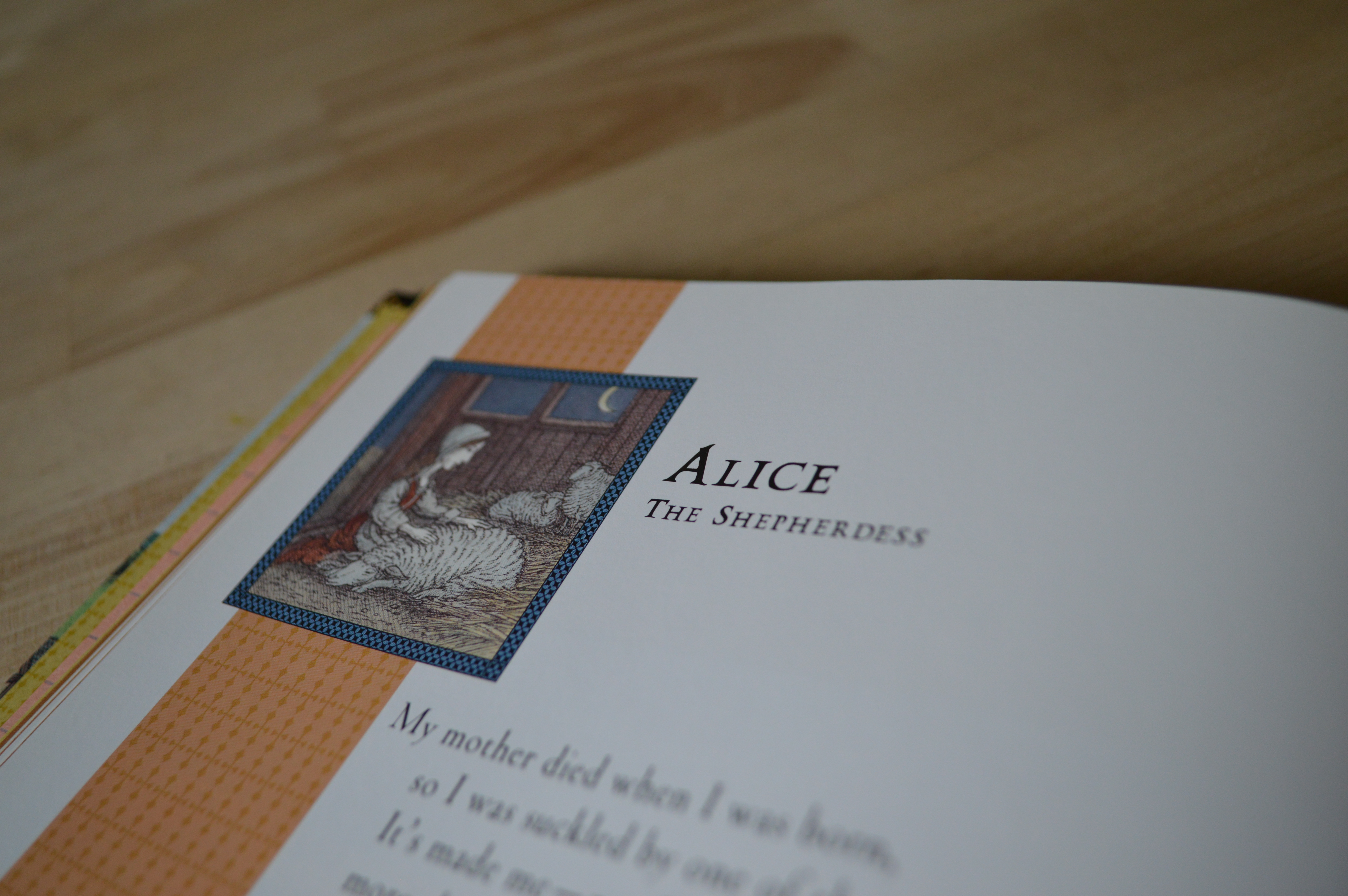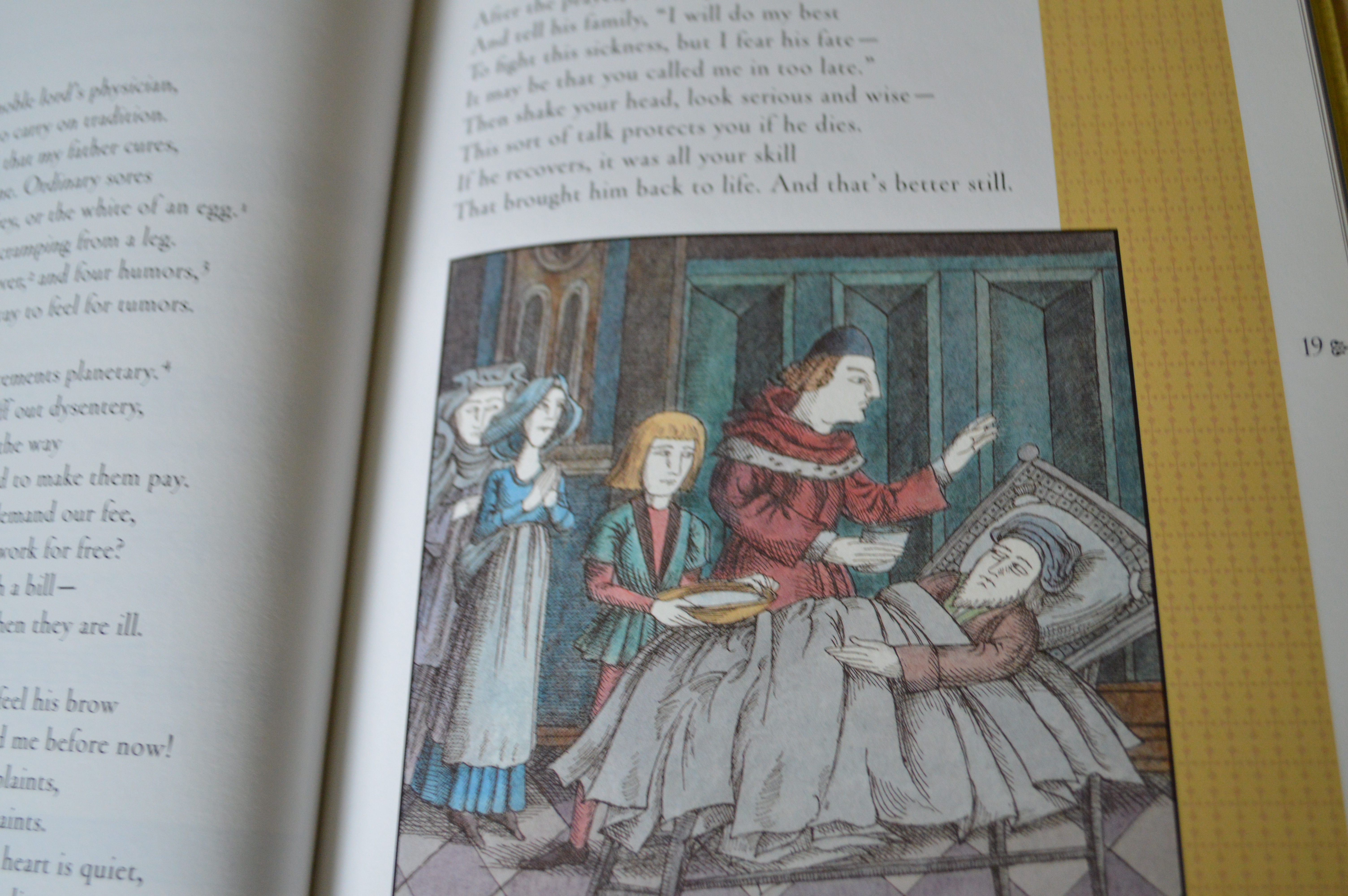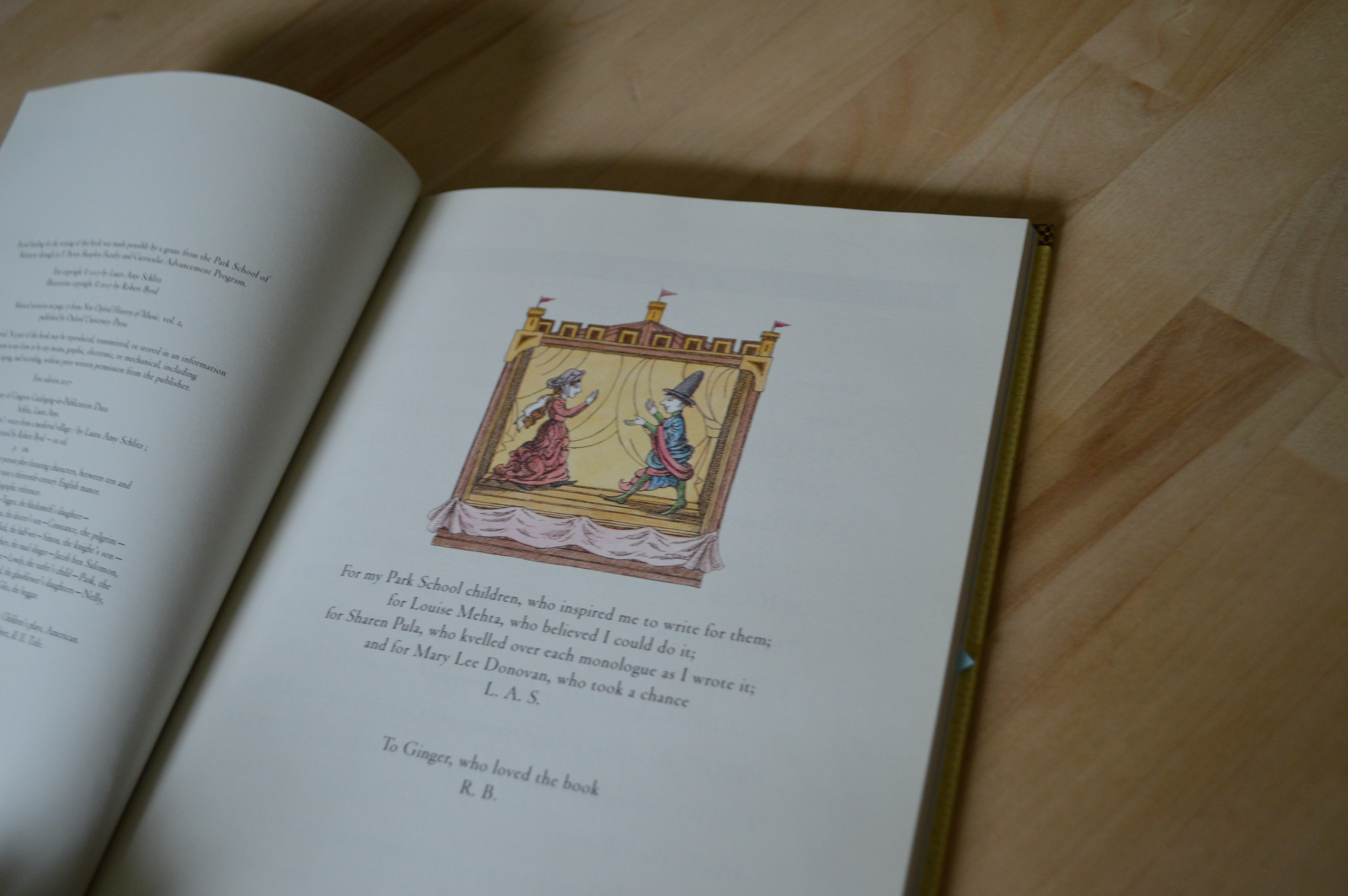
2008 Newbery winner, Good Masters! Sweet Ladies! Voices from a Medieval Village by Laura Amy Schlitz is a set of 19 related monologues (plus 2 dialogues) about children during the Middle Ages in England. In her forward, she writes that while she was working as a school librarian, a group of students was studying the Middle Ages, “and they were going at it hammer and tongs. They were experimenting with catapults and building miniature castles, baking bread and tending herbs, composing music, and illuminating manuscripts. I wanted them to have something to perform. The only difficulty was that there were seventeen children in every class, and no one wanted a small part. It really isn’t possible to write a play with seventeen equally important characters in it. If you read Shakespeare, you’ll see that he never managed it–there are always a few characters that have little to say or do. So I decided to write seventeen short plays–monologues–instead of one long one, so that for three minutes at least every child could be a star”(p. viii). And while this book works as one to read (especially the edition illustrated by Robert Byrd), it really does work well in the classroom as part of a Middle Ages unit; my husband Evan, a middle school social studies teacher, uses it in his 7th grade classroom every year.

What I liked. I am pretty biased when it comes to this book since I studied late medieval and early modern childhood in graduate school, so obviously I think it’s a fascinating topic and super important! I think that if you read this book alongside Avi’s recent Newbery Crispin (#83, 2003) I think you’d get a pretty rounded view of childhood experience during the Middle Ages. I also really loved how the stories would intersect between characters where someone would mention a different character or retell the same story but from a different perspective.

What was interesting . There were so many interesting little details and facts about medieval life here: saints days, boar hunting, medieval money, guilds, traders, and apprenticeships. Laura Amy Schlitz and the layout designers did a nice job pulling out particular words or phrases that could use a quick definition and context as well as “A Little Background” pages that laid out the three-field system, falconry, the Crusades, pilgrimages, Jews in Medieval society, and towns and freedom for those peasants who were tied to the land.

What were some limitations. I don’t think this is a limitation so much as a thought on what ages this is most appropriate for. Particularly this edition with all its beautiful colors looked enough like a picture book that my five year old insisted that it was a book for him and I read it aloud. There are definitely some hard and harsh things that these characters discuss, which totally flew over Jackson’s little head, but overall, I would say that middle school is a good time for this book.

Similarity to other Newbery winners. It’s the 9th medieval set Newbery (The others were Trumpeter of Krakow, Adam of the Road, Door in the Wall, Dark Frigate, Whipping Boy, Crispin, Midwife’s Apprentice and Witch of Blackbird Pond.) In tone, it’s probably the most similar to Karen Cushman’s work in Midwife’s Apprentice with its balanced female and male voices, downtrodden children, and mixture of hope and hardship. In other ways, it is more like the two poetry collections A Visit to William Blake’s Inn and Joyful Noise: Poems for Two Voices because the monologues almost seem like poems, although it still has more narrative drive than those purely poetry books, but less than say a verse novel (like Out of the Dust) or a multiple-point-of-view novel (like Criss-Cross). And with its pull out “A Little Background” sections, it a bit like the non-fiction book Lincoln: A Photobiography. Overall, I suppose, it’s a rather unique book, and it makes me wonder if there will ever be a play script that wins the Newbery.

What it teaches me as a writer. I think that I really appreciated Laura Amy Schlitz’s ability to make the connections between the stories few enough that when the characters did appreciate, or help, or have a crush on one another, it felt genuine and unforced. It felt like the way that kids really do notice each other even as they are mostly still wrapped up in their own worlds of family and immediate personal problems and situations. I think writing about young affection and infatuation in a believable and unforced way is challenging but when it works really adds depth to a story.

Have you read Good Masters! Sweet Ladies!? What are your favorite medieval historical tales?

*Note* This post contains Amazon affiliate links, which means if you were to buy a book, I’d get a tiny commission at no cost to you. Thanks for supporting Stories & Thyme!*